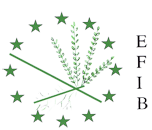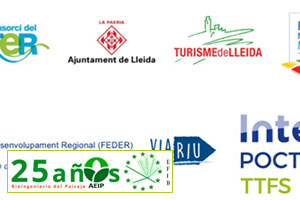Bioingeniería del paisaje. Ciclo de charlas/webinars
[vc_row][vc_column][vc_column_text]LA BIOINGENIERÍA DEL PAISAJE es una disciplina técnico-científica en la cual las plantas se utilizan como elementos de construcción, conjuntamente o no con elementos inertes (piedra, madera, metal…) en actuaciones de recuperación del entorno tanto en el control de la erosión superficial como en la estabilización de taludes.
Actualmente la crisis climática y el impacto a la biodiversidad está provocando efectos secundarios como la oruga (Cydalimaperspectalis) que está matando al boj Buxussempervirens; la quitridiomicosis, causada por un hongo, que está afectando a los anfibios; la Cryphonectriaparasitica, conocido como chancro, un hongo que está afectando a los castaños…y el COVID 19 que está afectando a la humanidad.
Una de las muchas pequeñas grandes soluciones es la de trabajar con recursos locales y sostenibles, es también trabajar aprovechando los servicios ecosistémicos… y la Bioingeniería del Paisaje es una disciplina que sirve como una herramienta muy valiosa. Con estas charlas pretendemos actualizar la información sobre todo lo que ya se ha llevado a cabo y plantear los retos de futuro de nuestra disciplina.
Webinar 1:
¿Por qué proyectar con Bioingeniería del Paisaje? Retos y oportunidades en escenarios de cambio global
Paola Sangalli / Paolo Cornellini • 14 OCTUBRE 2020[/vc_column_text][/vc_column][/vc_row][vc_row el_class=”verde”][vc_column][vc_column_text]SOIL AND WATER BIOENGINEERING is a technical-scientific discipline in which plants serve as construction elements in environmental recovery actions. Here, the living materials can be used alone or accompanied by other inert elements (stones, wood, metals …) in controlling surface erosion and in slope stabilization.
Currently the climate crisis and the impact on biodiversity is causing secondary effects such as the caterpillar (Cydalimaperspectalis) that is killing the boxwood Buxus sempervirens; chytridiomycosis, caused by a fungus, which is affecting amphibians worldwide; Cryphonectriaparasitica, known as chancre, a fungus that is affecting chestnut trees … and also COVID 19 that is affecting humanity.
One of the many great little solutions is to work with local and sustainable resources, as it also is to benefit from ecosystem services … and, again, Soil and Water Bioengineeringis a discipline that serves as a very valuable tool. With these talks we intend to provide the state of the art of landscape bioengineering, analysing its past, present and the future challenges of our discipline.
Webinar 1:
Why projecting with Soil and Water Bioengineering? Challenges and opportunities in a global change scenario Paola Sangalli / Paolo Cornellini • 14 OCTOBER 2020[/vc_column_text][vc_single_image image=”1337″][/vc_column][/vc_row]



